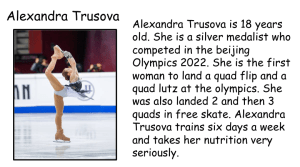What is Adaptation?
Adaptation is when something changes to survive in the environment. A tree in winter loses its leaves to survive in the winter. New Zealand creatures adapt to the environment to stay predator-free. Many New Zealand creatures have adapted, there are around 100 species of cicada and 39 species of Gecko. How do they adapt? Each animal has unique features that help them change.
The Tui
In 1770, the Europeans first encountered the tui on the North Coast during Captain Cook’s first voyage (Adventure). A Tui usually lays about 2-4 pink pale eggs. Tui’s eat nectar from flowers or native plants. The Maori believe that Tui’s can be the messengers of God and Goddesses. The Tui’s adaption is their curved beak that fits perfectly into nectar in native flowers.
The New Zealand Sea Lion
The New Zealand Sea Lion first appeared 120,000- 220,000 years ago by Georg Wilhelm Steller, a German Surgeon. The Maori name for the Sea Lion is Whakahao-Pakake. Sea Lions went extinct in the 19th century. Sea Lions are mammals and are endangered. The Sea Lions adaptation is that they see better underwater than out, it helps them to get their food underwater.
The Tuatara
The Tuatara is a really unique animal that has really unique features in its bodies. One of the unique features are that their bodies are colored to blend in with the ground floor. Their adaption is that their tails fall off when they get attacked.
The Gecko Gecko’s first appeared around the early days of the dinosaurs, Between 180 and 225 million years ago. One of their adaptions is that they have really sticky feet to climbs walls, ceilings and other stuff.
The Moa
The Moa is a flightless bird discovered by the Europeans. The person who discovered the first Moa is Richard Owen. Moa’s became extinct about 500 years ago. An animal that hunted the Moa’s were the Haast Eagles. Moa’s are about 3 metres (10 feet) tall.
The Haast Eagle
The Haast Eagle’s wingspan is about 3 metres long and its body length is about 1.4 metres. The Haast Eagle usually hunted the Moa. The Haast Eagle lived in the South Island and one of Stewart Island. The Haast Eagles’s scientific name is Hieraaetus Moorei. The Haast Eagle went extinct and went extinct because in the 13th century when humans arrived. The Humans hunted them and they couldn’t adapt and find a new prey.
